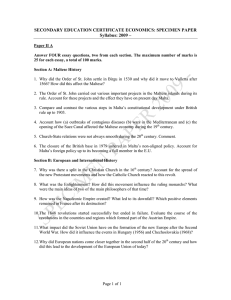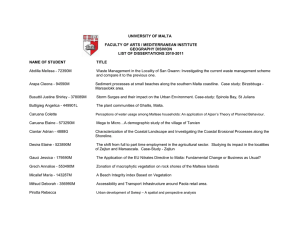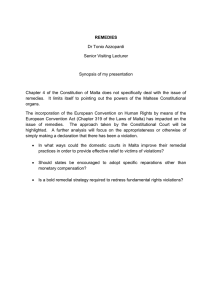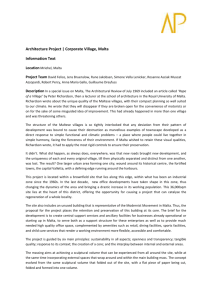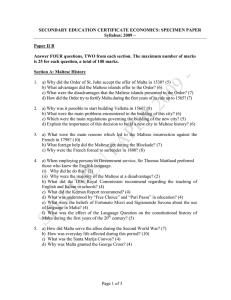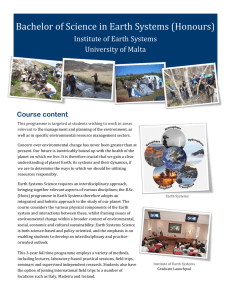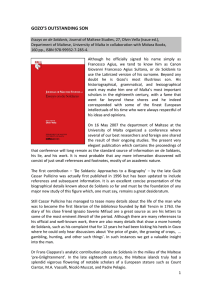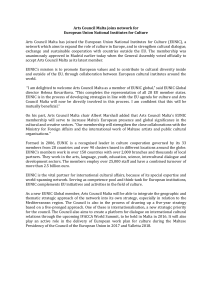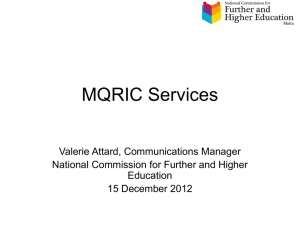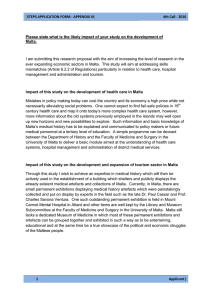The Influence of National Culture in Strategic Public Relations: The
advertisement
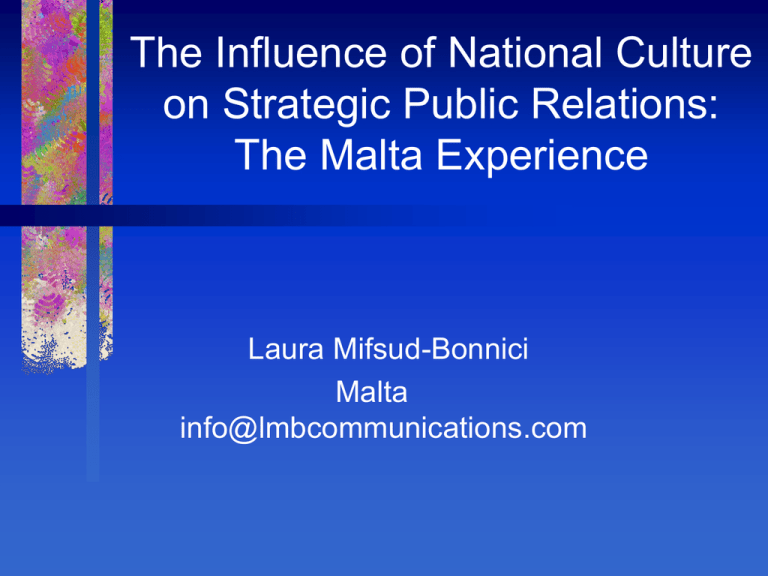
The Influence of National Culture on Strategic Public Relations: The Malta Experience Laura Mifsud-Bonnici Malta info@lmbcommunications.com 'Small scale does not in itself cause anything. It only establishes a framework which makes more likely the triggering of certain behavioural responses…Somehow, smallness, mediated and operationalized in real-life encounters, could be conceived as another pertinent feature, along with others, to promote a better understanding of the small-scale, social universe.' (Baldacchino, 1997) Literature Reviewed included that on: • interpersonal communication and networks • social influence and reputation • public relations and local media • Maltese history and the current economic/political situation • anthropological and social studies on Malta • globalisation and cross-cultural communication The study stresses the importance of meaning and 'the analysis of signs and symbols, especially in language…it attempts to decipher hidden messages and the system of codes through which people communicate both verbally and nonverbally, consciously and unconsciously'. (Heath and Bryant, 1992) Malta is considered a high context society, where non-verbal cues, social and physical contexts and existing relationships between communicating participants may ascribe much of the meaning Popular Maltese proverbs suggest the effects of personalisation and patronage: It's not what you know but who you know Malta is small and its people well-known It is better to have a friend in the market than money in your coffer. 'Every Maltese is at the centre of a large network of kin relations. Thus, when the need arises, many people are able to move along the intricate channels of consanguinity and affinity to establish personal contact with influential persons. It has also been noted that this network of kin can be extended artificially. Important persons, such as politicians and professionals are often invited to become godparents, marriage witnesses and confirmation sponsors. These relationships are constantly manipulated to bring individuals in touch with decision makers.' (Boissevain, 1993) This study sought to: • explore practitioners' understanding of the function of public relations and their use of interpersonal channels of communication • discover the role that influence and persuasion play in their practice, and • explore the links between personalisation, patronage, reputation and public relations, as practised in a small society Category Theme 'That Is What Public Relations Is' 'Speaking For Others’ 'Money Talks' 'We Don't Refer To That As Public Relations' 'Malta Is Malta' 'I Have To Walk Around With A Halo' 'Everyone Knows Everyone' 'One Tends To Politicise Everything' 'We Need Human Input' 'Tying You To Your PC' 'Difficult To Penetrate The Core Media' 'whatever you need, if you don't know somebody there who can provide it, you know somebody, who knows somebody who can' 'Happily, we are all individuals similar to others in many ways and yet very different to others. It is these differences that make us who we are and determine the directions in which we will grow and change. Being normal doesn’t mean giving up our uniqueness so we can be like everyone else.' (Buscaglia, 1992)
